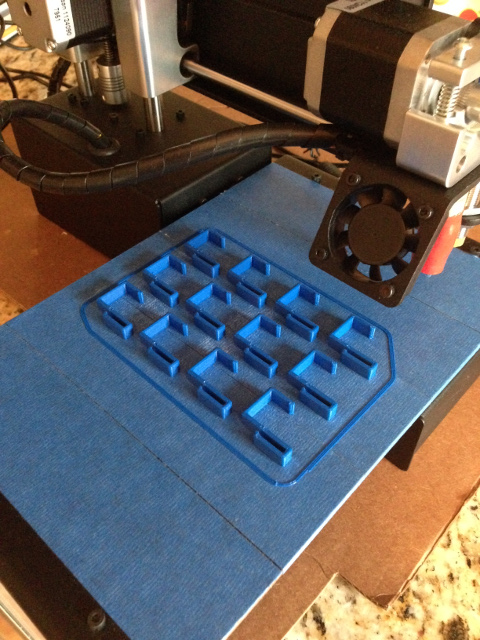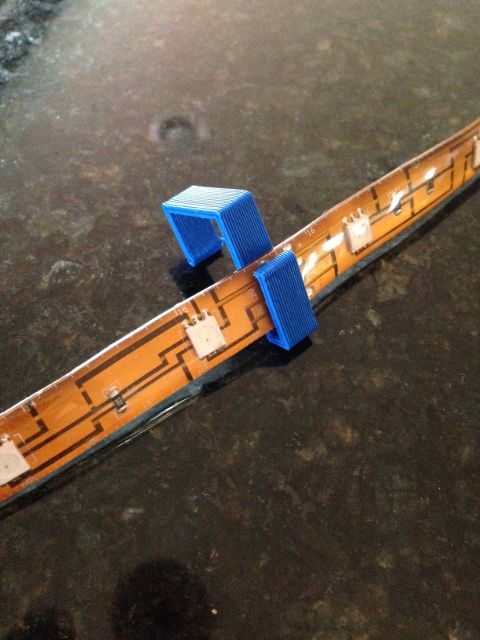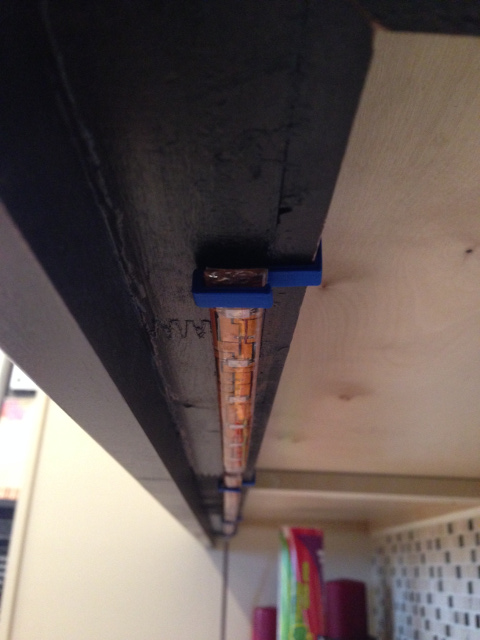Several years ago, I designed a board to provide PWM control of RGB LED lighting strips. The boards have been used in several projects over years, but recently I wanted to add under-counter lighting in the kitchen. The LED strips seemed like a perfect fit. Under ‘normal’ circumstances it would provide a dimmable, cool white light source and for holidays it would provide for endless color variations and strobe patterns. Would the latter be considered ‘non-normal’ use? Maybe not.
First thing was to measure the LED strip and the counter moulding dimensions. Once I had the numbers, I created a model in OpenSCAD. That model is shown below.

The model was exported as an STL file and fed through Slic3r to produce the g-code for printing. A single bracket was printed for test fitting, a couple of small adjustments were made and then a larger batch of brackets were printed.

Shown below is one of the brackets attached to the LED strip.

All that was left to do now was to mount the LED-strips using the brackets and wire them up.

